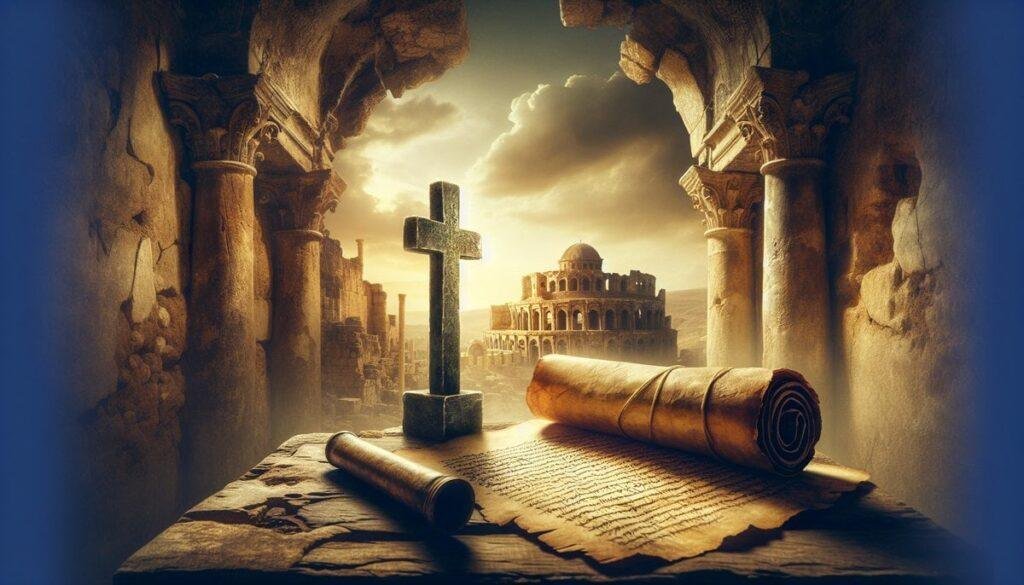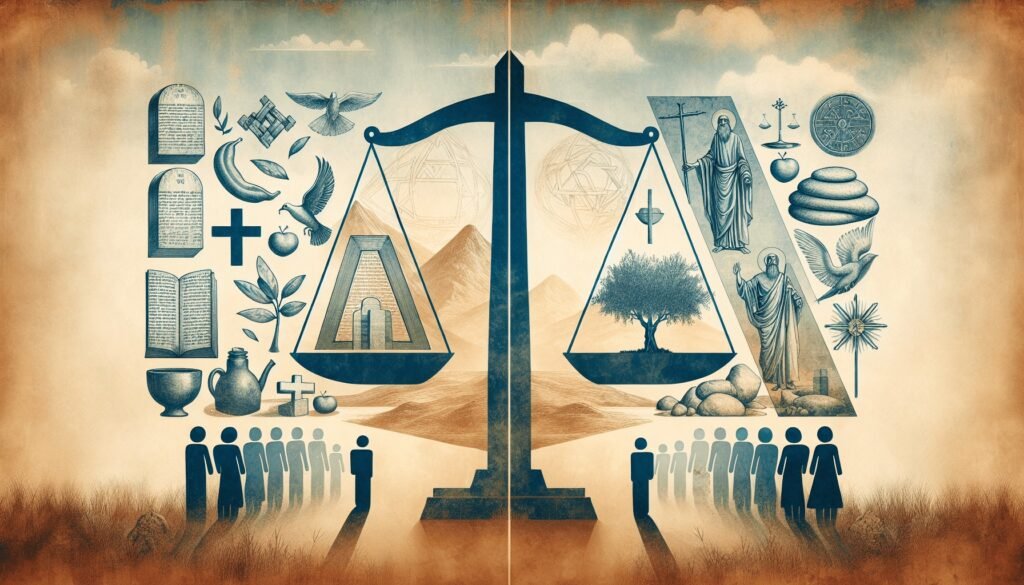What if the return of a legendary artifact could reshape not only faith but also culture itself? The Ark of the Covenant, an object steeped in biblical history and mystery, has long captivated the imagination of scholars, theologians, and seekers. Its anticipated return is not merely a matter of religious significance; it also profoundly involves the rich tapestry of the ascetic community that has worked to preserve spiritual practices over centuries.

The Ark of the Covenant: A Brief Overview
To appreciate the ascetic community’s role in preparing for the Ark’s anticipated return, it’s essential to understand what the Ark is and what it symbolizes. According to the biblical narrative, the Ark of the Covenant served as the earthly dwelling place of God among the Israelites. It’s often depicted as a gold-covered wooden chest containing the stone tablets of the Ten Commandments, which Moses received on Mount Sinai.
- Symbol of Divine Presence: The Ark was revered as a symbol of God’s covenant with His people.
- Historical Context: Its last known location was in the temple of Solomon, and it disappeared following the Babylonian conquest of Jerusalem.
The mystery surrounding the Ark has fueled countless theories and quests for its rediscovery, linking it inexorably to a religious fervor that has manifested in various communities, especially among ascetics.
The Ascetic Tradition: A Historical Perspective
Asceticism refers to a lifestyle characterized by abstinence from various worldly pleasures, often for religious or spiritual reasons. Historically, the ascetic tradition has roots in numerous faiths and philosophies, most notably in early Christianity, Buddhism, and Jainism.
Key Features of Ascetic Practice
- Simplicity: Ascetics often live with minimal possessions and involvement in community life.
- Self-Discipline: Rigorous practices such as fasting, meditation, and prayer are common.
- Spiritual Focus: The primary goal is to deepen one’s connection to the divine, often through detachment from earthly concerns.
The significance of their lifestyle is not just personal; ascetics often serve as spiritual leaders, influencing larger communities and movements.

The Ascetic Community and Its Connection to the Ark
You might wonder why the ascetic community has a vital role in the context of the Ark’s anticipated return. It’s not just about personal piety; it’s about creating an environment of faith and preparation for something revered.
Spiritual Guardianship: Safeguarding the Sacred
One could argue that the ascetic community offers a form of spiritual guardianship—a commitment to preserving the integrity of sacred teachings, traditions, and artifacts.
- Custodians of Tradition: Ascetics have often acted as custodians of spiritual wisdom and practices.
- Relevance of Rituals: Through their rituals, they keep alive the stories and meanings associated with sacred artifacts.
Preparing Hearts and Minds
The ascetic community’s role transcends mere physical preparation. They often emphasize the importance of inner readiness in anticipation of profound spiritual events.
- Meditative Practices: Strong focus on meditation and prayer cultivates a mindset conducive to receiving the divine.
- Community Engagement: Through communal activities, they can share teachings and emphasize the significance of the Ark.
Archaeological Findings and the Ark
Understanding the physical aspects of the Ark through archaeological studies enriches our comprehension of its cultural and historical context.
Key Archaeological Discoveries
Several significant finds have emerged that deepen our understanding of the Ark and the world it inhabited.
| Discovery | Location | Significance |
|---|---|---|
| The Temple Mount Excavations | Jerusalem | Unearthed artifacts that align with the biblical narrative about the Temple of Solomon. |
| The Uzziah Inscription | Jerusalem | Mentioned the burial of a king, providing context for the significance of the Ark in Israel’s history. |
| The Dead Sea Scrolls | Qumran | Contain references to the Ark and outline the theological context of the ascetic community that preserved them. |
The Dead Sea Scrolls and Asceticism
The Dead Sea Scrolls, discovered in the mid-20th century, are particularly significant for understanding the ascetic community’s connection to the Ark. Scholars have theorized that the community associated with these scrolls—often considered ascetic—held views on the Ark that aligned with their interpretation of scripture.
- Prophetic Visions: The scrolls contain texts that prophesy the Ark’s return, emphasizing its importance in the eschatological framework of their beliefs.
- Ritual Practices: Detailed rituals elucidate the community’s understanding of their relationship with the divine, reflecting a deep reverence for sacred objects.
Theological Foundations: Ark Symbolism in Asceticism
To fully grasp the ascetic community’s role regarding the Ark, you should consider the theological symbolism that the Ark embodies.
Covenant and Commitment
The Ark represents a covenant—a promise between God and His people. For ascetics, this is not just a historical point but an enduring commitment.
- Living the Covenant: Ascetics might express their commitment to this covenant through their lifestyle choices and spiritual disciplines.
- Interpreting the Covenant: In their writings and teachings, they explore what it means to be in relationship with the divine and how to prepare for His return.
Eschatology and the Ark’s Return
In many religious traditions, the return of revered artifacts holds eschatological significance. For the ascetic community, the Ark symbolizes a deeper spiritual awakening yet to come.
- Anticipating Fulfillment: The Ark’s return is viewed as a sign of divine promise being fulfilled, encouraging inner growth and communal unity.
- Transformation Through Faith: Preparing for the Ark’s return becomes a transformative experience that transcends personal belief, influencing societal values.
Cultural Impact of the Ascetic Community
You might find it fascinating how the ascetic community’s beliefs and actions intersect with broader cultural themes, especially in settings where the Ark’s narrative takes center stage.
Asceticism in Popular Culture
The story of the Ark has transcended religious boundaries, significantly influencing literature, film, and art. Ascetics often occupy a space of increasingly popular interest due to their perceived connection to mysticism and spiritual wisdom.
- Cinematic Portrayals: Films like Raiders of the Lost Ark dramatize the search for the Ark while embedding themes of spirituality and adventure.
- Literary References: Authors frequently reference ascetic ideals to convey deeper meanings about life, purpose, and connection to the divine.
Community Engagement and Social Justice
The ascetic lifestyle often intertwines with concepts of social justice—challenging materialism, advocating for simplicity, and emphasizing community support.
- Outreach Initiatives: Many ascetics engage in initiatives to care for the poor and marginalized as a reflection of their beliefs.
- Promotion of Ethical Living: By embodying their principles, they serve as models for ethical living, inspiring followers to consider the implications of their actions.
Conclusion: Connecting Ancient and Modern Perspectives
In bridging the ancient significance of the Ark of the Covenant with modern perspectives, you uncover a richer understanding of faith, commitment, and community. The ascetic community, through their lifestyles and teachings, not only prepare spiritually but also contribute to the ongoing dialogue about the Ark’s symbolism in our lives today.
Summary of Insights
- Historical Roots: The Ark is deeply embedded in the history and spirituality of the Israelites, representing God’s covenant.
- Role of Asceticism: The ascetic community serves as both custodians and spiritual guides as they prepare for the Ark’s anticipated return.
- Cultural Resonance: The themes surrounding the Ark and asceticism resonate across cultures, impacting society at large—reminding everyone of the deep human yearning for connection to the divine.
Ultimately, as you reflect on these teachings and insights, you may find yourself reconsidering the role of sacred objects and communities in your spiritual journey—realizing that preparation isn’t merely about waiting for something monumental to occur, but about fostering an inner transformation that connects both past and present.


